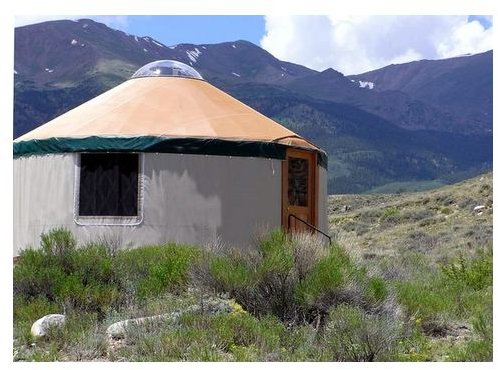Yurt Homes: Great Green Homes Off the Grid
All About Yurts
A Yurt is an easy-to-assemble shelter that once was used for by nomadic tribes in Central Asia. Turks, Mongols, Kazakhs, Russian and many Central Asian nomadic tribes relied upon yurts for portable shelter before the common era. The word yurt is of Turkish origin, meaning a dwelling that is a home. Circular in design and traditionally made of wood and sheep’s wool (felt), the portability of yurts have made them attractive and affordable housing alternatives for Westerners who want to reside off the grid.
Green Affordability
An attractive aspect of yurts is that they are easy to assemble and when they are compared with traditional housing, they are surprisingly affordable. Yurt companies have sprung up all over the United States and most pride themselves for their green housing initiatives. Since there are yurt companies around the country, one can factor in the green aspect of transportation. Depending on how rustic one wants to live, yurts offer ways to live in blissful simplicity or in down-home comfort. With the advent of yurt support, it is possible to assemble and fine-tune a yurt for a reasonable price. All that is needed is land upon which one can place their domicile.
Green and Off the Grid
By investing some time and ingenuity, a yurt home can be designed that is totally off the grid. Purchase plans for building affordable wind turbines and for installing solar panels as renewable energy sources. Install a pellet or wood stove. Yurts are designed for energy efficiency, so large and complex energy plans are not necessary. Composting toilets save water and use no energy. The composting material can be used in a garden.
Yurt Comfort
Living off the grid does not mean that one has to live painfully rustic. Yurts can be customized with insulation liners, awnings and doors with windows among other additions. Most additions add to a yurt’s energy efficiency and to one’s overall comfort.
For example, with an optional dome, one can add a ceiling fan to keep cool in the summer. Of course, the fan can be powered by solar energy or by wind energy. It is an enticing picture: Visualize no utility bills, living green–away from the madding crowd.
References
- Image: Finished Yurt by Aluter under CC BY SA 3.0
- Yurt Information, http://www.yurtinformation.com/
